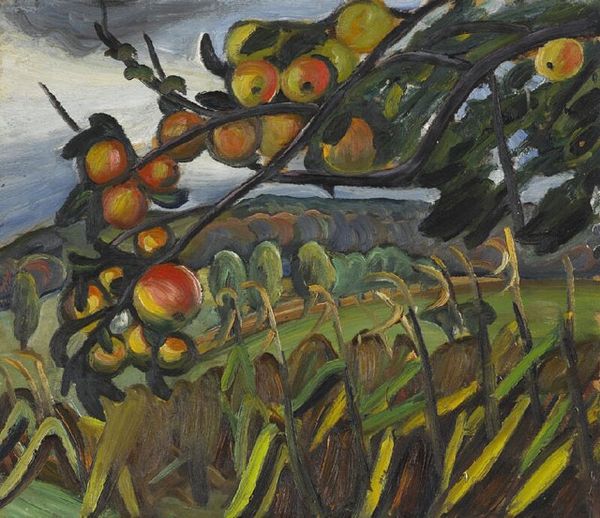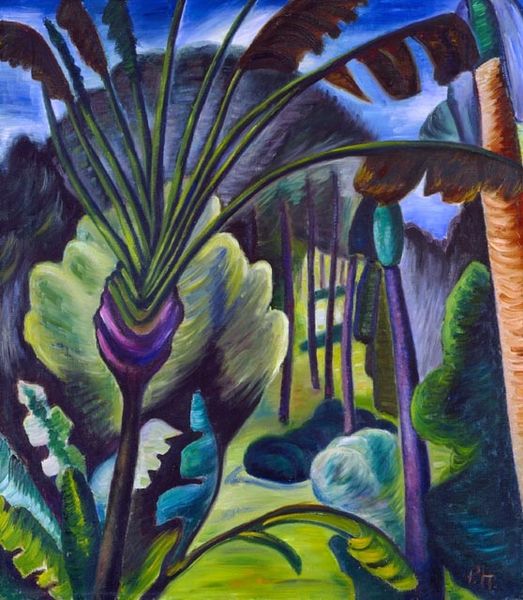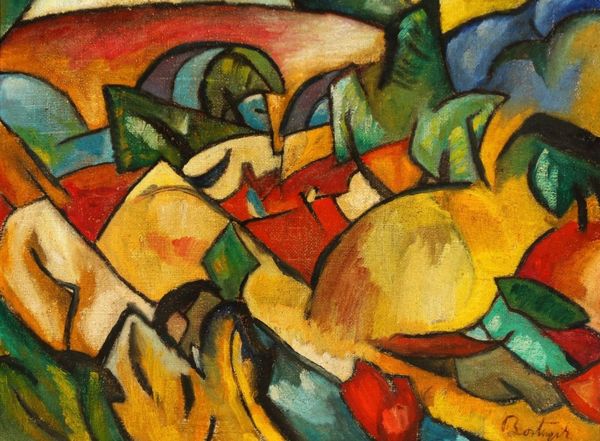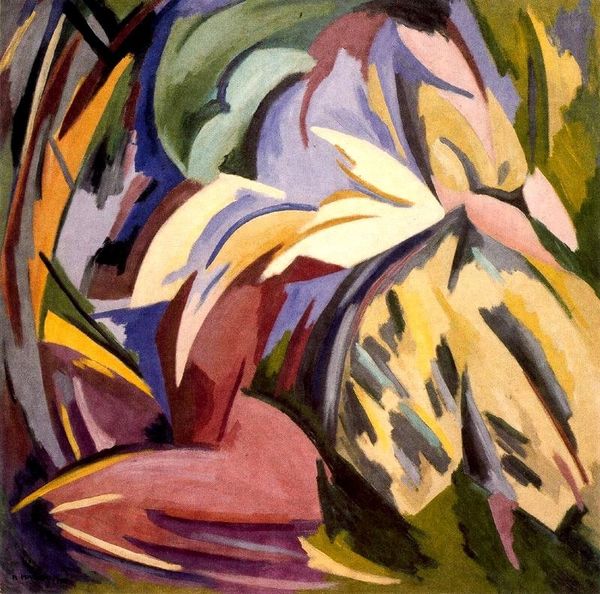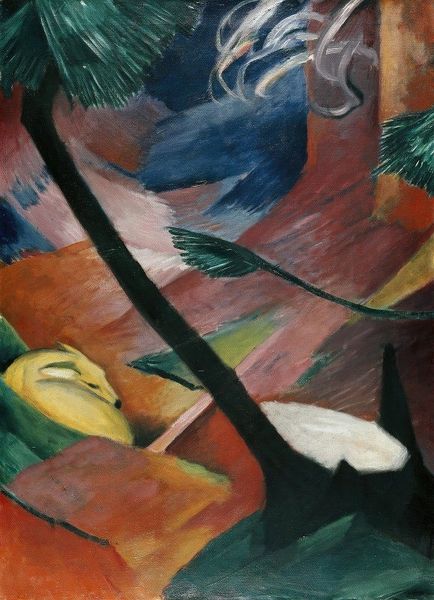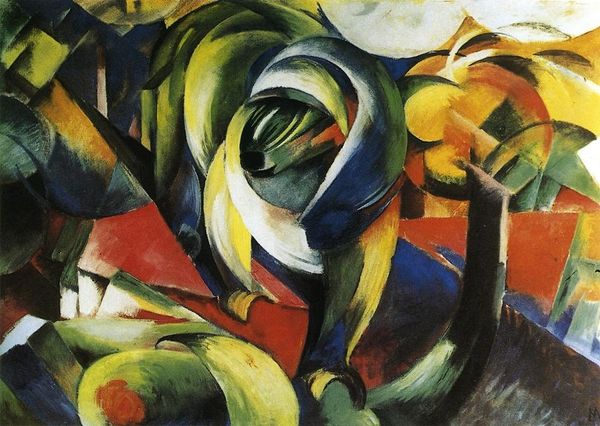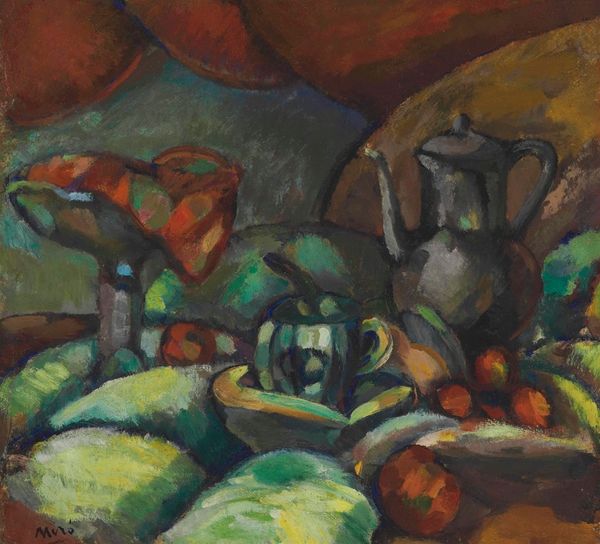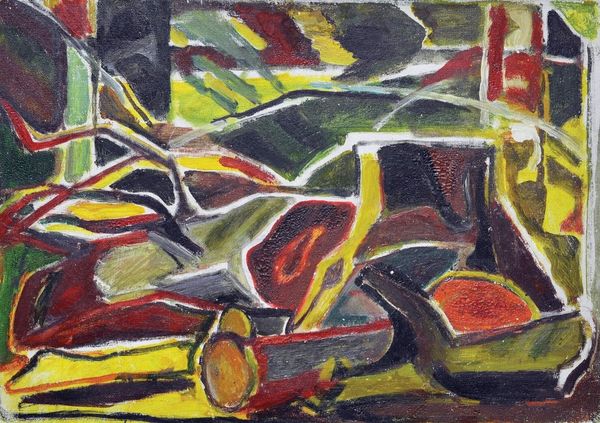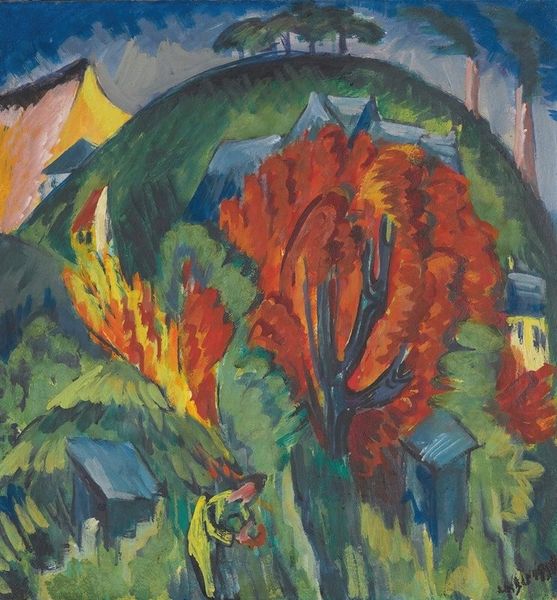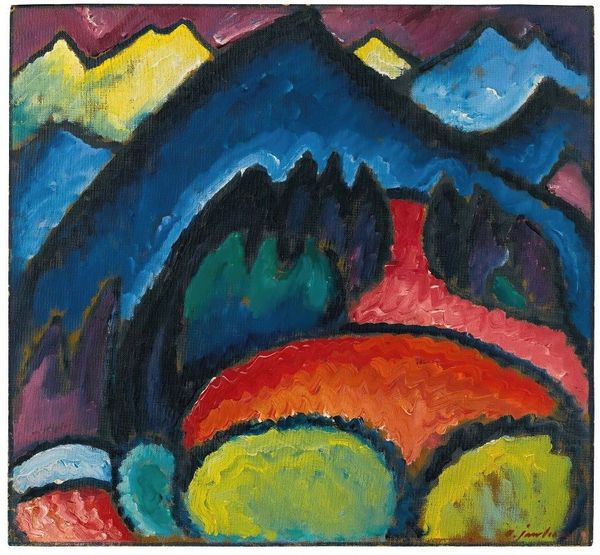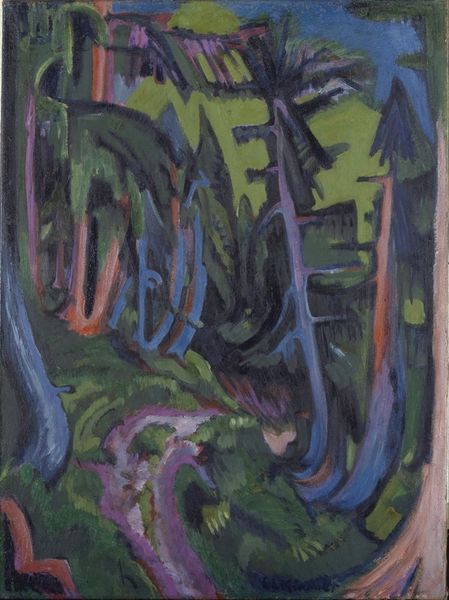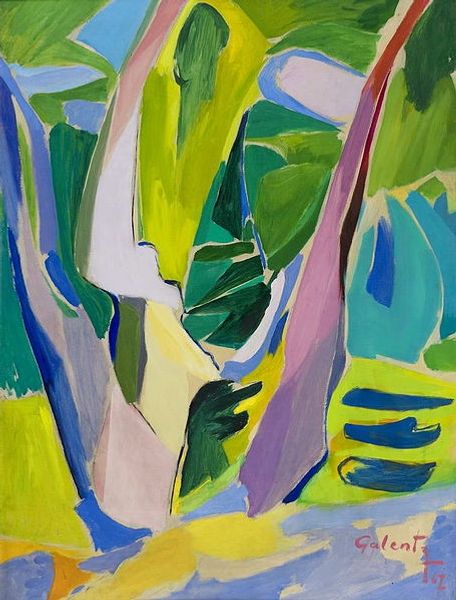
Copyright: Public domain
Curator: This painting, simply titled "September", was created in 1938 by Prudence Heward. It’s an oil painting. What’s your initial impression? Editor: It feels…claustrophobic, almost oppressive, despite the subject matter seemingly being from nature. The colors are rich, but muted, bordering on decay. What’s Heward trying to say? Curator: I see it as a meditation on temporality. Given the title "September," and Heward's broader context as a queer woman navigating the predominantly male art world of her time, the fruits could signify fleeting moments of sustenance and joy against a backdrop of societal constraints. Notice the brushwork and its potential link to production? Editor: Yes, there’s a tension there, a lack of finish. It isn't idealized—the impasto makes the surfaces look so coarse and physical. Were these plants available and common, do you think? This approach suggests the availability of resources but maybe a rough handling in making them art. Curator: That roughness you observe contributes to the painting’s emotional weight. Heward lived through a turbulent period—the Depression, rising fascism—and while not directly representational of these events, the painting may indirectly reflect those anxieties. I suggest also how "September," marks a transitional period. Summer's abundance is waning. Editor: Interesting. So it's less a celebration of autumn’s bounty and more a…premonition? Are the plums an aesthetic decision, or do they hint at something? Curator: Considering the prevalence of still lifes in art history and its historical association with female artists, this is more complex. While some fruits could represent prosperity and bounty, the almost bruised look of some pieces lends to a queer reading with the awareness that gender is political material. Editor: That’s thought-provoking. It's about transformation. We can think about how our experience is constantly shifting and influenced. It speaks volumes about how to deal with transformation as women and outsiders, don’t you think? Curator: I agree entirely. I came away seeing the interplay between visibility and obscurity in her compositions mirroring our complex individual position and resilience as queer individuals.
Comments
No comments
Be the first to comment and join the conversation on the ultimate creative platform.

